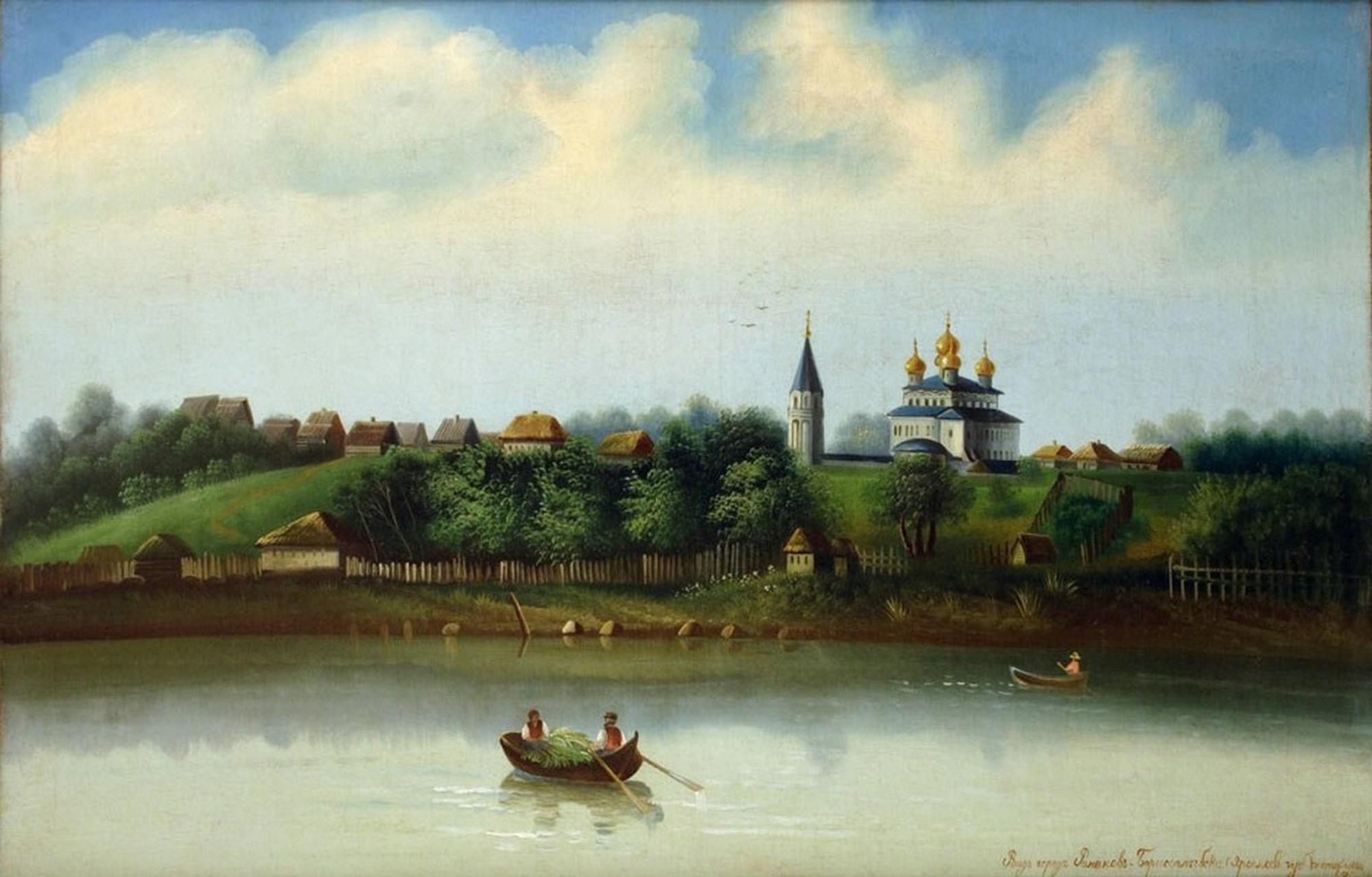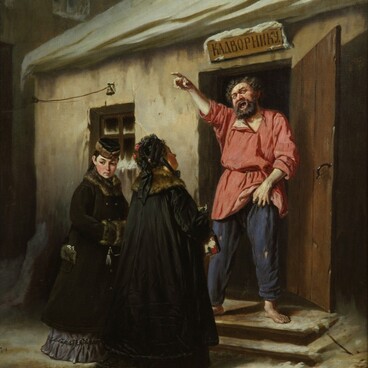The Town of Romanov-Borisoglebsk Viewed from Volga was painted after 1891 by an unknown artist who found the scene in the Niva magazine. The issue carried a drawing by Vladimir Suslov, a prominent student of traditional Russian architecture. The painter was inspired by the picture and reproduced it in oil on canvas.
In 1884 Vladimir Suslov toured Yaroslavl, Kostroma and Romanov-Borisoglebsk accompanied by photographer Ivan Barshchevsky. Together they studied the architecture of ancient cathedrals, photographing them and taking measurements. After their tour the Imperial Academy of Arts issued an album which included sheets with measurements of the Resurrection cathedral that features in the painting. Suslov drew the Romanov-Borisoglebsk view between 1884 and 1891, and soon afterwards the drawing was reprinted by the Niva.
Although repeating Suslov’s composition, the anonymous artist relied on his own intuitive feeling in choosing color and painting technique. He used a vivid palette applying smooth, flat layers of paint, taking special care to depict fine details. Using a limited set of artistic devices he created an idealized image of nature.
Little concerned about historical accuracy, the painter depicted the Resurrection cathedral topped by gilt domes instead of the architectural prototype’s green. Russian Orthodox architecture associates the green color with the Holy Spirit, while gold usually stands for eternity and heavenly glory.
The anonymous landscape bears certain characteristics of provincial art. For this reason it is not displayed among Russian countryside scenes. Instead, we placed it next to Yaroslavl merchants’ portraits which also belong to this category.
Provincial art took shape under the influence of imported European paintings, local iconographic traditions, and popular art. This work borrows from all of these sources but to a different degree, with folk art traits predominating. The author created a laconic and ornamentally colorful picture that would be more appropriate for a painted casket than a landscape proper.
In 1884 Vladimir Suslov toured Yaroslavl, Kostroma and Romanov-Borisoglebsk accompanied by photographer Ivan Barshchevsky. Together they studied the architecture of ancient cathedrals, photographing them and taking measurements. After their tour the Imperial Academy of Arts issued an album which included sheets with measurements of the Resurrection cathedral that features in the painting. Suslov drew the Romanov-Borisoglebsk view between 1884 and 1891, and soon afterwards the drawing was reprinted by the Niva.
Although repeating Suslov’s composition, the anonymous artist relied on his own intuitive feeling in choosing color and painting technique. He used a vivid palette applying smooth, flat layers of paint, taking special care to depict fine details. Using a limited set of artistic devices he created an idealized image of nature.
Little concerned about historical accuracy, the painter depicted the Resurrection cathedral topped by gilt domes instead of the architectural prototype’s green. Russian Orthodox architecture associates the green color with the Holy Spirit, while gold usually stands for eternity and heavenly glory.
The anonymous landscape bears certain characteristics of provincial art. For this reason it is not displayed among Russian countryside scenes. Instead, we placed it next to Yaroslavl merchants’ portraits which also belong to this category.
Provincial art took shape under the influence of imported European paintings, local iconographic traditions, and popular art. This work borrows from all of these sources but to a different degree, with folk art traits predominating. The author created a laconic and ornamentally colorful picture that would be more appropriate for a painted casket than a landscape proper.



